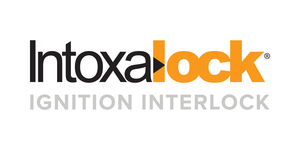DES MOINES, Iowa, Jan. 26, 2017 /PRNewswire/ -- Statistics provided by Mothers Against Drunk Driving (MADD), confirm what officials at Intoxalock have already known – when a license suspension or revocation stands alone, it is not an effective deterrent to drunk driving. In fact, three out of four drunk driving offenders on a suspended license will continue to drive.1
"Depending on a state's regulations, one of the consequences of a drunk driving offense could be the driver's license being suspended or revoked. Unfortunately, license suspension/revocations alone have proven not to be successful. There is nothing physically in place to stop offenders from continuing to drive after drinking," said Brad Fralick, Intoxalock Director of Government Relations.
Even more sobering, most offenders have driven drunk at least 80 times prior to getting caught.
"Generally, drunk driving offenses aren't caught the first time that individual has made the choice to get behind the wheel while intoxicated. This is a pattern of behavior that the driver has no intention of changing," Fralick said. "Ignition interlock devices are the only intervention solution that actually stops an intoxicated individual from starting their car. The driver now has no choice but to change their behavior."
When an ignition interlock device has been installed in a drunk driving offender's vehicle, the driver must breathe into a handset that is connected to the vehicle's electrical system. If alcohol is present on the breath, the vehicle won't start. Once the vehicle is successfully started, the breathalyzer must be blown into at random times throughout the drive to prove continued sobriety.
Since 2010, across the nation, interlock devices have prevented more than 1.77 million attempts to start a vehicle by somebody with a blood alcohol concentration of .08 and above.
Misperceiving intoxication levels
According to a study completed by the US National Library of medicine2, when asked to estimate their intoxication level, "individuals at lower levels of intoxication tend to slightly overestimate their BAC, but those at higher levels tend to markedly underestimate their BAC level."
The study is conclusive in showing that generally speaking, people struggle to accurately estimate their level of intoxication. The most intoxicated drinkers are the most likely to be impaired and are the biggest dangers behind the wheel.
"It's alarming that this category of people is the one that tends to underestimate just how intoxicated they really are. Because of this, the likelihood of them taking the chance of driving after drinking increases," said Fralick.
"By simply suspending their license, there are no definite measures in place to accurately determine sobriety. Ultimately, there is very little stopping drunk drivers, especially habitual ones, from continuing to drink and drive unless a physical deterrent is in place," he continued.
About Intoxalock
Headquartered in Des Moines, Iowa, Intoxalock (http://www.Intoxalock.com) developed its state-of-the-art ignition interlock device in conjunction with researchers from Iowa State University. Recently celebrating their 23rd anniversary in the alcohol monitoring business, Intoxalock currently services clients that are legally required to install an IID or home alcohol monitoring unit in 41 states across the nation, in addition to voluntary clients in all other states. In the last 10 years, the ignition interlock industry has grown three-fold and is expected to continue as drunk driving legislation strengthens.
1MADD
2US National Library of medicine
SOURCE Intoxalock
Related Links
WANT YOUR COMPANY'S NEWS FEATURED ON PRNEWSWIRE.COM?
Newsrooms &
Influencers
Digital Media
Outlets
Journalists
Opted In





Share this article